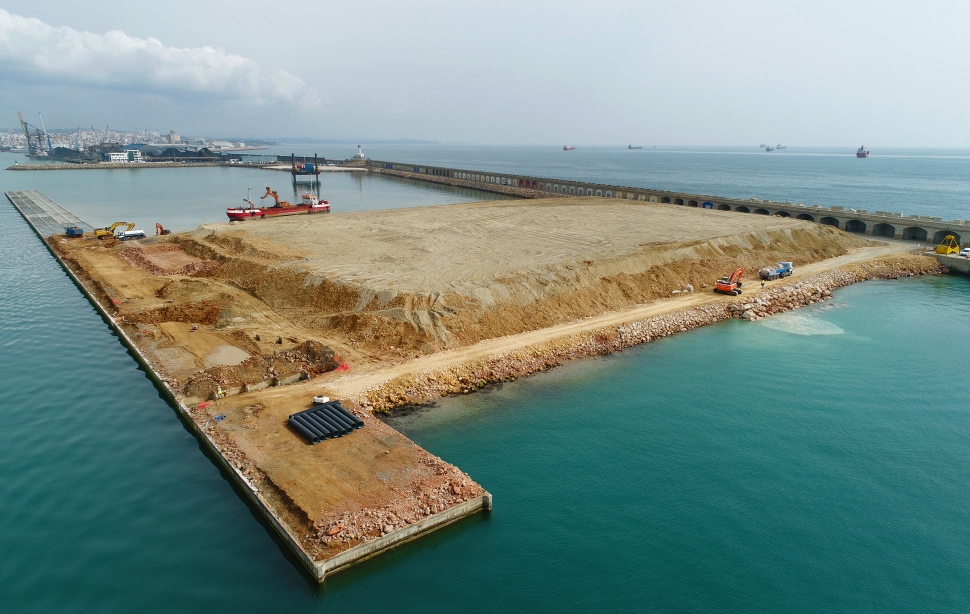The Port of Tarragona begins construction of the Balears Wharf edge beam
-
Published in 2021
The 5.4-m-wide, 1.7-m-thick reinforced concrete beam will run along the entire length of the outer and inner wharf
The beam will be fitted with 200-ton bollards for mooring cruise liners
The Balears Wharf will be operational in June 2021
The Port of Tarragona is about to begin installation of the edge beam on the Balears Wharf. It is a 5.4-m-wide, 1.70-m-thick reinforced concrete beam that will run along the entire length of the outer and inner wharf. The bollards, fenders and other auxiliary dockside elements will be fitted to it.
Dock edge beams are reinforced concrete elements built in situ that enclose the upper exterior ends of the wharf. They are designed to act as an enclosure on the esplanades, to achieve the correct alignment of the pier, to allow the anchoring of fenders, bollards, stairways, etc. and to support the lanes along which cranes run, where their use is planned (this is not the case of the Balears Wharf).
Bollards with a capacity of 200 t necessary for mooring cruise liners will be installed along the beam. The Balears Wharf is being built to receive the world’s largest cruise ships. These vessels have a very high freeboard (the distance between the gunwale and the waterline), which generates a sail effect.
The outer dock will be equipped with white shield fenders designed for mooring the largest vessels without marking their white hulls. The inner dock will have the traditional cylindrical fenders.
The dock edge will also be equipped with ladders for boatmen and for rescuing people from the water. There will also be rings on which to tie spillage containment barriers and for the manoeuvring of different service vessels.
Balears, a completely settled wharf
There has been no let-up in the activity on the Balears Wharf. In recent weeks the preloads have been moved back from the wharf with the aim of settling the esplanade adjacent to the dock with the weight of the material dredged from the seabed. This intervention was carried out with part of the material extracted from the seabed by the dredger Zhen He.
The settlement of the wharf was carried out with different topographic precision tools in order to verify the process and the material was extracted to be able to continue with the other construction tasks such as levelling or asphalting.
Prepared for the future
This new infrastructure will enable the Port to welcome more visitors in improved conditions. The total berthing line will be 700 metres, as along 240 of the 460 metres it will be possible to berth on both sides, adding to the area of the Llevant breakwater. This means that the number of vessels that can dock simultaneously and also accommodate the largest cruise ships in the world has been doubled.
The Port of Tarragona has conceived this wharf as a multipurpose facility to receive different types of port traffic both now and in the future. Currently, the priority is to use it for passenger cruise ships, an operation that is expected to begin in the middle of this year. The new infrastructure will have a very long operating life and its design allows it to be converted for operations with solid bulks and other types of cargo if necessary.
